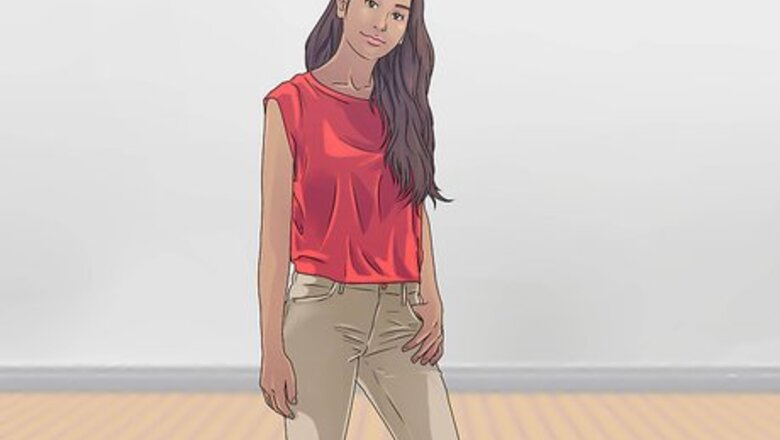
views
Mastering the Poses
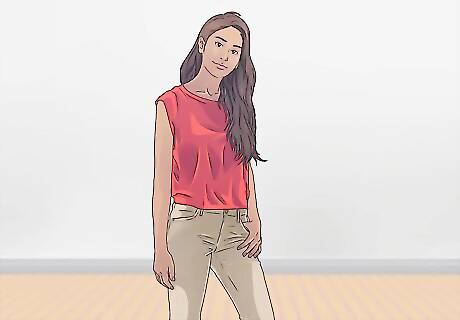
Slouch a little, but hold your head high. There are a few times when you'll need to throw your shoulders back for a shot, but generally, a little slouch makes your pose look natural and relaxed. That doesn't mean you should hunch over (although this will work with some high fashion shots). If you're standing, put uneven weight on your feet, and the leg with less weight will naturally bend a little. You'll look more comfortable and your posture will appear more natural. Don't slouch so much, though, that it makes your stomach look bigger. By "slouch," we mean "be natural." Most people aren't aware they're slouching when they are, so don't take your natural slouch and multiply it. Think casually, but with your head high. You want to elongate your neck as much as possible. Imagine a string holding up your forehead.
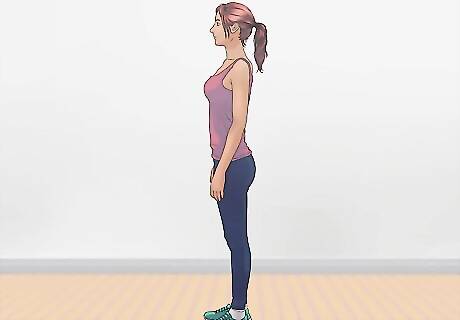
Be strong from head to toe. Your entire body needs to have life to it. Think of a dancer -- not a single part of her body isn't engaged while she's dancing, even if she's standing in position. No part of you should be a limp noodle! Start by engaging your core (this will help suck you in, too) and then engage your limbs. "Strong" doesn't mean aggressive or masculine in this context -- it just means with conviction or with energy. You want to convey a feeling through the camera, after all!
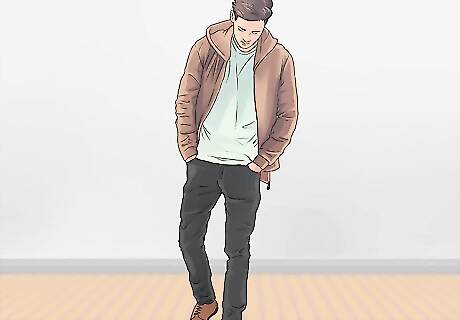
Be asymmetrical. For a more interesting shot, make sure that you're doing something different with each side of your body. You can be dramatic and do something totally different with each of your limbs and tilt your head to the side, if it matches the feel of the shoot. Being asymmetrical can be as simple as dipping one shoulder or hip, making sure that your arms are at different heights, or bending one leg a little (or a lot) more than the other. Remember: You're part of a picture. This photo isn't about how gosh dang pretty you are -- it's about the aestheticism of the photo. Even with the best make-up and hair in the world, if you don't create pleasing angles, the photo won't be as stellar as it could be.
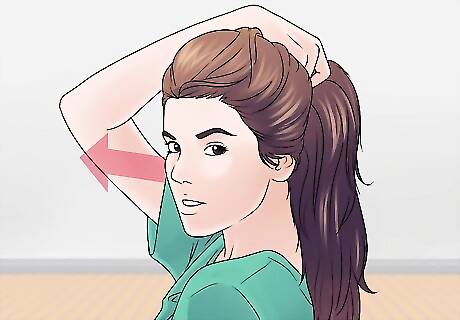
Point your nose away from the camera. Looking at the camera straight on can work in some dramatic shots, but generally it's better to put your face at an angle, and look at the camera from that angle. Tilt your nose a little up or down, a little left or right, but keep your gaze on that camera. Learn which angles flatter your face the most. Do you have a great jawline? Tilt your head up and to the side a little. Experiment in front of a mirror or with your own camera to see which angles make the most interesting shots on your face. Know which direction the light is coming from. Remember that light will cast shadows, and even if they are slight, they will affect the appearance of your face. If light is coming from the top, tilting your nose down may cause your browbone to cast a shadow over your eyes, which is good if you're going for a sinister shot, but not good if you're trying to look friendly.
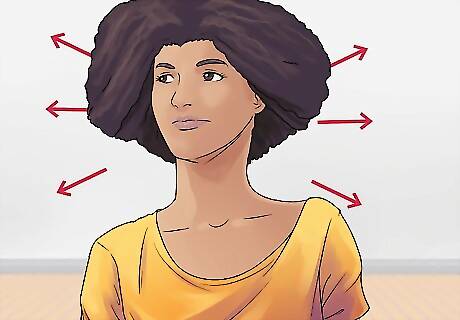
Look everywhere. While an interesting shot can be had by looking at the camera, you have many more options if you look elsewhere. What's going on over there? Is she staring in the mirror? Does she see a leprechaun? Is she talking to the Queen of England? Everyone will want to know. Be careful of the clichéd, staring-off-into-the-distance look. At best you'll look existential and at worse you'll look like you're trying to be existential by staring off into the distance. Use this gaze minimally.

Quarter out. Kinda like the last tip just eluded to, quartering out will make you look as slim as possible. Is she facing forward? Is she facing to the side? Just how wide is her waist? NO ONE WILL KNOW. Stick to a 3/4 angle to appear the slimmest. Going head-on into anything will make you the most vulnerable and exposed (that goes for real life, too!). If you quarter out, which side is your good side? Emphasize that one to get the best photo.
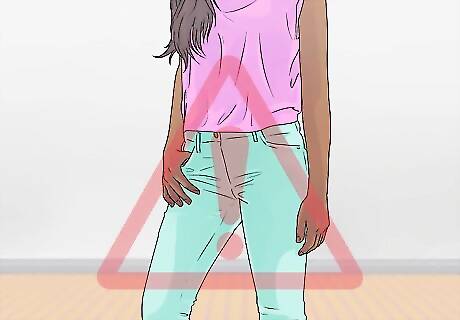
Remember your hands. Possibly the most awkward part of modeling is knowing what to do with your hands. They're just there hanging awkwardly. If you stay engaged head to toe, though, hopefully you'll find poses that feel right, that make sense. The only thing you should not do, is put them around your face. Hello, bad 1980s glamour shot! A good rule of thumb is to show the side of your hand. This creates the longest, thinnest line extending from your arm. It also avoids the are-my-hands-aging fear and the do-my-palms-look-funny worry.
Mastering the Techniques

Have the "perfect smile". There is an art to posing with a perfect smile and most good models know how to do this naturally. It is a smile that is halfway between the biggest smile you can make and no smile at all. The lips are slightly parted and only the upper teeth are showing. The smile is considered a "gentle smile." The result should look pleasant and relaxed. Generally, smiling will lift the cheeks and narrow the eyes. So, try to relax your eyes so that they are opened and the whites are showing. This may take some practice in front of a mirror to isolate the different muscle groups; however, it will be worth the effort. Whether you are a model or someone just looking to improve your portraits, mastering the perfect smile can make major improvements to your shots.
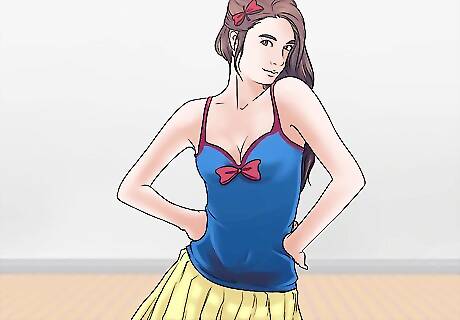
Create an intensity. Being a deer in headlights or just plain looking bored is not an interesting statement on non-conformity, a new take on the materialism of the fashion industry, or at all endearing. It's just awkward. When your image is captured, you have to feel something the camera can catch. It'll depend on the shoot, but whatever it is, create it. Feel it. Reek of emotion. The only non-abstract way to put this is to use your eyes. It's super easy to smile with only your mouth or do a pose with your body and forget that your face doesn't match. If you're unsure what you should be feeling, how is your body cuing you? Are you strong and confident? Are you happy and carefree? As Tyra says, "Smize!" Translation: smile with your eyes.
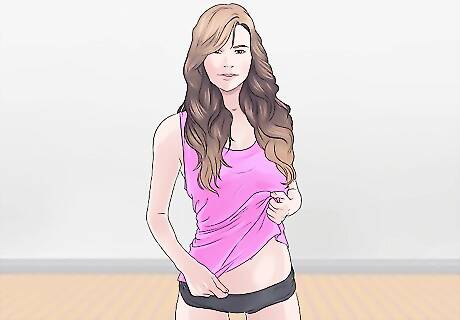
Be tasteful. In some of the clothes you might choose to wear, it would be easy to feel a little naughty. Regardless of what you're wearing (in most circumstances), it's best not to look predatory. A good model should be about sophistication and class. Even if you're in a teeny bikini, think casually. Your body will emphasize your beauty enough -- your face and pose don't have to, also.

Mix it up constantly. You should be changing poses roughly every three seconds. A photographer will not want to waste time taking the same photo over and over and over. Even if you're unsure that you look good, go for it! You'll get a lot of options to choose from when you're done -- some of them are bound to look great. Feel free to go a little crazy. If your poses are unique, you'll be memorable. Keep the techniques you know (working in angles, etc.), but switch them up with minute variations. And a little can go a long way. Don't try to force a pose. Instead, just let it come naturally.

Hide your flaws. Everybody has 'em. Even size 000, 7 ft tall Dutch models have 'em. Odds are you're aware of them, too! The good news is that there is surely a way to hide them (not that they're not wonderful -- just not ideal for the camera). If you put your hands on your hips, it'll create the illusion of a smaller waist. The holes between your arms and body create a background that removes emphasis from that area. Do this in real life, too! Keep your chin up to reduce your forehead. (The opposite goes for big chins!) Not only will keeping your chin appear strong and hide your forehead, but it'll also elongate your neck. Turn a knee in to get slimmer hips. Oh, that elusive thigh gap that most women don't have. But if you turn your knee in, it'll help you get there. And your hips will look smaller! If you turn your body to the side, but square your shoulders, your hips will look a lot smaller. It's like you're facing forward, but you only get the majority of your hips. Try not to lean toward the camera as you pose. Instead, suck in your stomach, hold your shoulders back, and point your bum to the back of the room. Putting your hips out to the right or left creates an "S curve," which can make you look thinner.
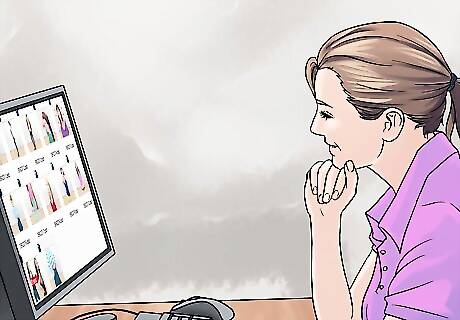
Practice. Get a digital camera, set up a tripod, and take thousands of shots. Since viewing the shots on your computer screen costs nothing, there's really no excuse not to practice. You should know which poses work for you and which don't. . Learn which poses flatter which parts of your body. Become familiar with which poses work with various types of clothing; some poses emphasize the clean lines of a power suit, while others emphasize the flow of a gown. Practice with props like a chair, or holding objects (a vase, a rope, a beach ball, whatever - be creative!). You never know what you'll be asked to do! For a flattering pose, try putting 1 of your feet in front of the other, pushing your bum out in the back, sucking in your stomach, and leaning your shoulders back.
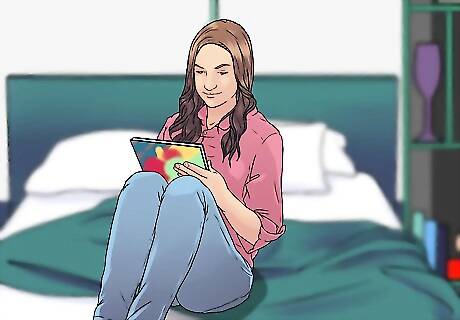
Study. Look at magazines and brochures with a critical eye. Make note of how the model is posing: What is she doing with her hands, limbs, head, eyes, lips? What emotion does the pose convey? Find your favorite model and analyze her. How does she walk? How does she hold herself in general? What are her go-to poses? While you don't want to be a mimicry, do pay attention to her habits to get you started.
Working on a Shoot

Listen to your photographer. A good photographer will offer feedback and hopefully be quite frank, telling you what to do so they can get the shot they want. Be cooperative and gracious (and graceful!). Don't allow yourself to get nervous, or else you will tense up and look stiff. Relax into each pose and connect with the camera. Take into consideration the type of shoot you're doing. If it's fashion modeling, you'll probably be asked to take on those angular, avant-garde poses that look a little strange and forced. If it's commercial modeling, you'll want to look casual and everyday. Think a Jean Paul Gaultier ad versus an ad for Aveeno.

Breathe. Sometimes when we concentrate, or when we're nervous, we slow or speed up our breathing dramatically. You might even find yourself holding your breath for a shot. Remain conscious of your breathing; keep it normal and relaxed. This step is super important. Your breathing can actually determine your mood, thus determining your poses. If you breathe quickly, that cues your body that you're ready for fight or flight -- imagine what you'll pose like when those thoughts are racing through your subconscious!
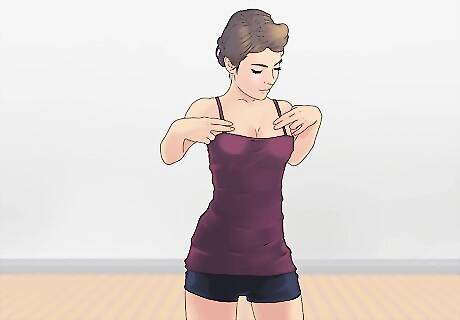
Don't worry your look. Some designers have pretty ridiculous visions that may leave you thinking something along the lines of, "I look like Lucille Ball just rolled out of bed and got attacked by a reindeer." Well, that's what they were going for apparently, so you've no choice but to rock it. Put it aside. You're still you. You've still got it. Remember how we said before that you are one part of an image? The photo is about you, sure, but it's also about the clothes you're wearing, the backdrop, and the feel of the photo. If you don't like your makeup, hair, or outfit, model through it. You've still got the smile, the poses, and the techniques.
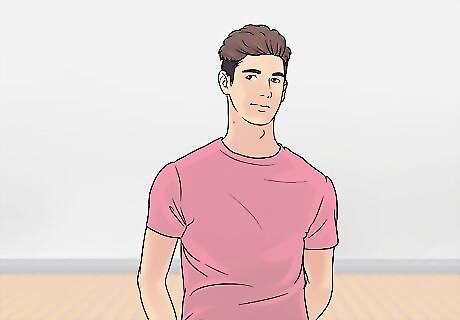
Visualize a motivation or feeling. This may help you capture the emotion that you need for a shot. If the photographer is looking for a melancholic shot, for example, imagine a melancholic episode from your life. You may find that you're better able to channel your "inner melancholia" that way. If visiting your own past hits a little too close to home, think of the plot of an applicable movie and put yourself into the actress' shoes. The thought process should take over your face and body, creating an intensity for the photo.


















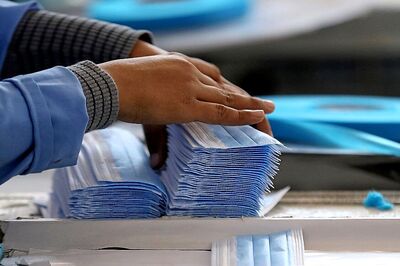
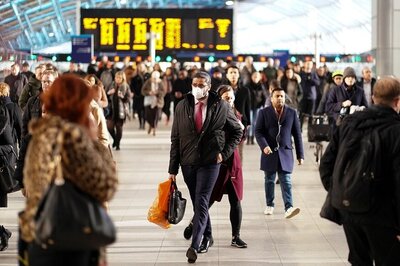
Comments
0 comment